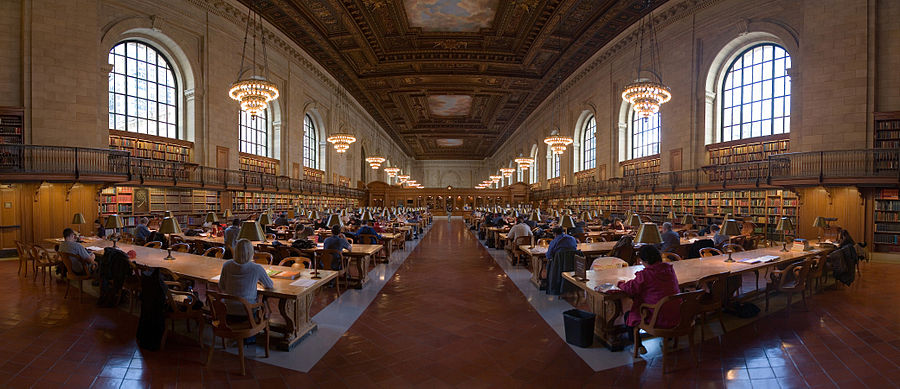Round-Down: New York Public Library Expands Under Bryant Park

The New York Public Library is undertaking a $23 million underground expansion at its Stephen A. Schwarzman Building on Fifth Avenue and 42nd Street in Manhattan to house its vast research collection, much of which which was formerly slated to be relocated to New Jersey. The additional space will help to house approximately four million research items and, according to the NYPL, will “allow the library to accommodate approximately ninety-five percent of all search requests on-site.”
The press release for this underground expansion corroborates this venture’s significance with hard numbers–this effort “will transform 55,700 square feet of raw space underneath Bryant Park into state-of-the-art storage that can hold about 2.5 million research materials.”
Tom Mashberg at the New York Times detailed the undertaking, mentioning that “by the end of spring (2016) library officials expect to be using a new retrieval system to ferry the volumes and other materials from their eight-four miles of subterranean shelving, loaded into little motorized carts—a bit like miniaturized minecars carrying nuggets of research gold.”
The decision to renovate and expand storage in this way was not one the NYPL came to immediately. Initially, the idea was to have the research collection moved to Princeton–but the public outcry against this proposition was strong.
As a result, the NYPL instead decided to expand its storage space under Bryant Park. In order to fit all these books in the space, the library has opted to forego the long-held Dewey Decimal System and to instead sort by size. This is a somewhat surprising and substantial revision to its sorting practices that might also provide a model other libraries could emulate with their own collections. It is interesting to consider how a library of this size and prominence might, in making this necessary and difficult expansion, affect change in new ways–possibly in how we sort books altogether.
Ultimately, NYPL officials hope that the books will be able to make the journey from stacks to reader in under forty minutes after the request is made.
NYPL President Tony Marx notes that “with this expanded storage capacity, we can provide on-site access to the researchers and writers who rely on our research collections while preserving these treasured materials for future generations.”
A considerable undertaking with an eye toward maintaining the library’s scholarly archive on-site, the Milstein Research Stacks should be open by late spring of 2016.

